"...el viejo libro escolar, compañero de los trabajos y los días de la infancia en el pasado, y también de los de sus maestros."
Y de las mamás que hacen homeschool.

- - - link / enlace (pdf) - - - this book lives in Berlanga de Duero at the CEINCE
parte 1:
parte 2: 08 pajarito - 13 gallo
parte 3
parte 4
parte 5
parte 6
Método Onomatopéyico
Gregorio Torres Quintero, 1926
This is "an old school book, a companion in schoolwork and the days of infancy of the past. And a companion to their teachers."
And a companion to mothers who homeschool well. (adpated from Agustín Escolano Benito)
In their materials for learning to read, the CMEC lists "Primers" and "Readers" and "Easy Readers" and "Series Books for Building Fluency". This book rests in these kinds of categories especially for "students who are technically reading but need more practice to build fluency." This book straddles lyric stories and narrative poems, with just a little bit of traditional handwriting practice.
La Impresora Azteca imprimió esta obra en el año de 1947 de la original de **1926**, y hoy lo hace de nuevo en 2024, para academia late y llama, quien lo encontró en la CEINCE (Centro Internacional de la Cultura Escolar) de Berlanga de Duero, Soria en la España rural, este Método Onomatopéyico.
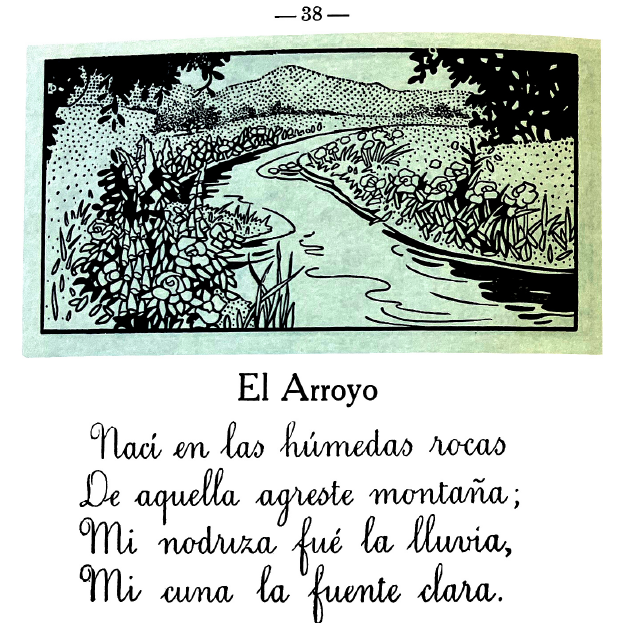
bite-size fluency practice
Four dozen perfectly-sized readings for fluency practice. These readings have been used in classes with beginners and with intermediate students. Working with beginners, the teacher needs to explain many of the vocabulary words. Students in our programs have access not only to the English translation, but to an audio recording of the reading. Most of the audio files are between 30-90 seconds long, so you know the stories are quick-paced for easy repetition.
Doesn't this one sound and look familiar?
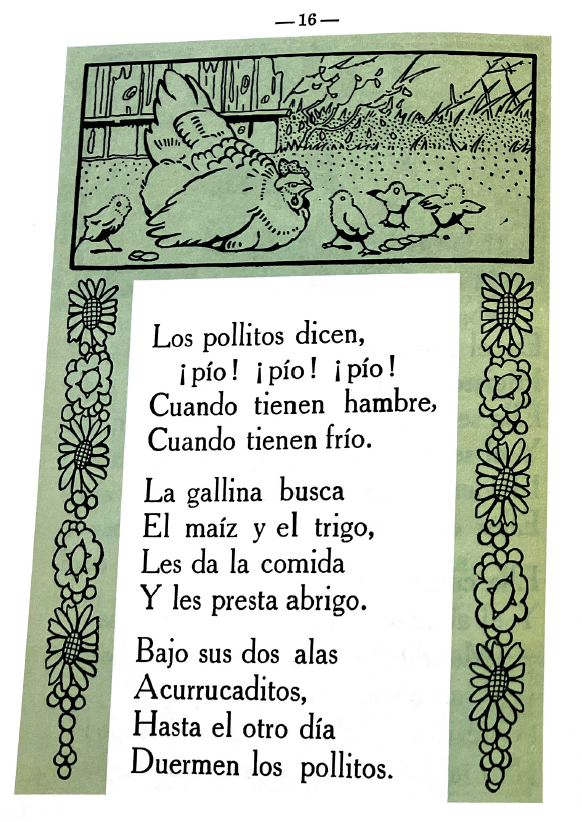
Most of the readings are this simple, albeit not so musical. Here are three quartets in twelve verses with a familiar melody. But pay attention to the narrative form of the text: baby chicks whine; the mother finds, feeds, and shelters the baby chicks; and happily, or better yet, acurrucaditos, they fall asleep. Mothers: ain't that the truth?
living, not twaddle
The above example, "Los pollitos dicen", is easy to accept as a "living book"; it is from a very familiar nursery rhyme and is beautiful in its poetry, meter, and rhyme.
Another example below is less lyrical but builds more narrative. In twelve verses, this time divided into two equal stanzas, we have a description and a woodcut image (!) of the scene that will be narrated. For the teacher, the visual is a wonderful resource to point out the new vocabulary or reinforce the plot. "There's a moon. It's night, look at how the moon shines. And there's going to be a fox!" A good teacher can build entire worlds and multiple the opportunities to provide understanding to language learners.
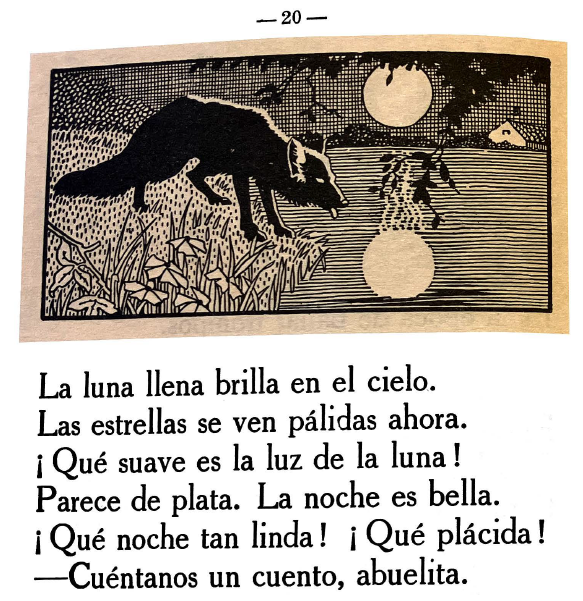
As we close the first stanza, we see a poignant line: children are begging grandma to tell a story. (Grandma must be a storyteller!) "- - Cuéntanos un cuento, abuelita." The following is a series of six verses that tell the microstory: fox goes to drink, moon is out like today, sees the reflection of the moon, thinks it's cheese, and jumps in to (mistakenly) try to eat it.
Again, this loses the musicality of the first example, but it builds a deeper story. The author-professor Torres Quintero is offering our students concise little stories, and offering both reader and teacher beautiful visual support for comprehension.
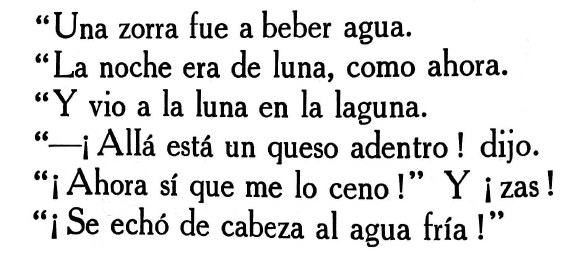
Charlotte Mason would agree that this, is not twaddle.
nature study
Something the pedagogues John Senior and Charlotte Mason would greatly appreciate is the book's focus on nature, especially from a young person's point of view.
Perhaps you noticed an arroyo (the seasonal creek), the pollitos (chicks), the zorra y luna in the examples above? Well, looking at just a few of the stories look at all the nature you'll see!
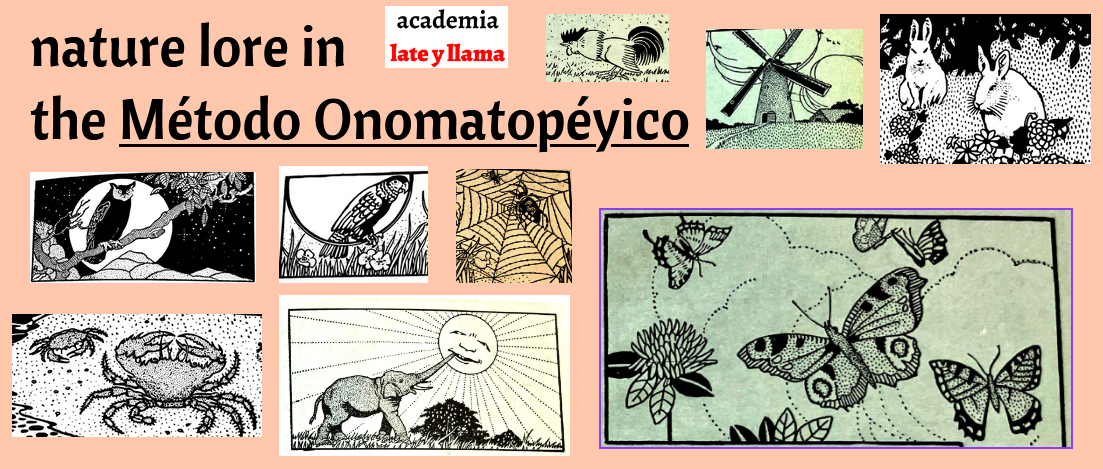
Or perhaps you and your readers can relate with taking care of pets (or food)? Or perhaps with seaside nature study?
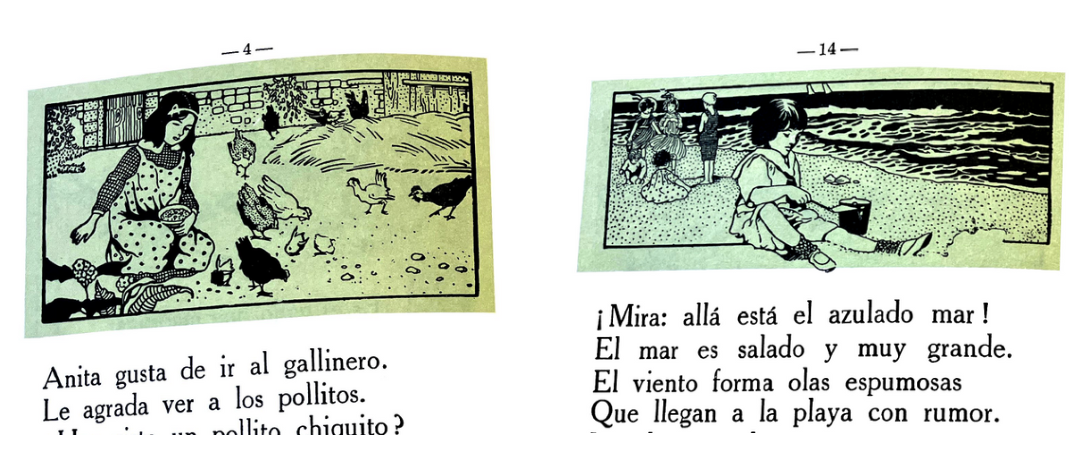
These readings align very well with a child's need to connect with the physical world, with the real. A good teacher can use these little stories for magical learning.
did I mention that it's free?
We found this treasure in the most wonderful educational library in the world, the CEINCE in rural Spain. An unexpected situation allowed our team to visit in summer of 2024, where we quickly took out our phones to capture images to process back home. We took that gift from the CEINCE, edited it, and uploaded it to the Archive for everyone to use. tolle, lege Take it and read!
It is available in the link below:
Buy of course our own students get quite a bit more.